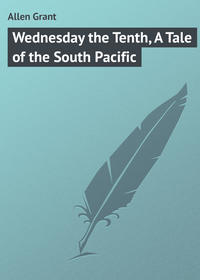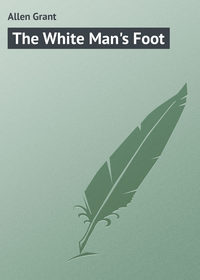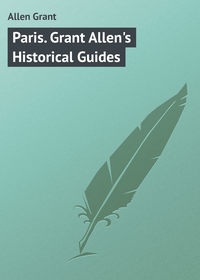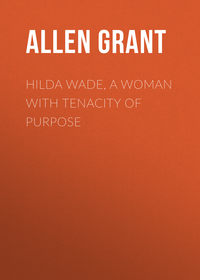 полная версия
полная версияCities of Belgium. Grant Allen's Historical Guides
Take Conway’s “Early Flemish Artists” with you in your portmanteau, and read over in the evening his account of the works you have seen during the day.
ORDER OF THE TOUR
IF possible, visit the cities of Belgium in the order in which they are treated in this Guide: – Bruges first; then Ghent, Brussels, and Antwerp. For this order you will find very good reasons. Bruges is the most antique in tone and the least spoiled of all the Flemish towns; it best exhibits the local peculiarities we have here specially to consider; and it leads up naturally to the other cities. It is true, Memling, the great painter whom we have chiefly to study at Bruges, is later in date than Jan van Eyck, whose principal work (with that of his brother Hubert) is to be seen at Ghent. But historical sequence in this minor matter is somewhat less important than a due apprehension of the general air of an old Flemish town such as those in which the art of the Van Eycks arose; and besides, there is at least one characteristic Van Eyck at Bruges, while there are many Memlings for comparison in other cities.
As a rule, too little time is given by tourists to Bruges and Ghent, and too much to Brussels. I should advise three or four days each to the first-named towns, and a week to the capital.
Those who intend to combine a visit to Holland in the same tour should certainly see Belgium in the order here given first, and then proceed to Rotterdam, the Hague, Haarlem, and Amsterdam. For such a sequence, which is geographically the easiest, is also chronologically natural. Bruges is the most mediæval of all the towns, and has for its principal great artist Memling. Ghent comes next, with the Van Eycks and a few later painters. Brussels represents the end of the Middle Ages, and contains a general metropolitan collection of early and middle Flemish art. Antwerp gives us in particular Quentin Matsys and his contemporaries, as well as Rubens and Van Dyck. And the Dutch towns lead us on through Van Dyck and the later transitionals to Rembrandt, Van der Helst, Frans Hals, and the other mighty masters of Holland. I may add that as the arrangement of this Guide is roughly chronological, the tourist will use it best if he follows its order.
The Ostend route takes the towns naturally in the sequence I suggest. Visitors arriving by Harwich or Calais should not stop first at Antwerp or Brussels, but go straight to Bruges, and then double back again.
I
BRUGES
A. ORIGINS OF BRUGES
IN a lost corner of the great lowland flat of Flanders, defended from the sea by an artificial dyke, and at the point of intersection of an intricate network of canals and waterways, there arose in the early Middle Ages a trading town, known in Flemish as Brugge, in French as Bruges (that is to say, The Bridge), from a primitive structure that here crossed the river. (A number of bridges now span the sluggish streams. All of them open in the middle to admit the passage of shipping.) Bruges stood originally on a little river, the Reye, once navigable, now swallowed by canals: and the Reye flowed into the Zwin, long silted up, but then the safest harbour in the Low Countries. At first the capital of a petty Count, this land-locked internal harbour grew in time to be the Venice of the North, and to gather round its quays, or at its haven of Damme, the ships and merchandise of all neighbouring peoples. Already in 1200 it ranked as the central mart of the Hanseatic League. It was the port of entry for English wool and Russian furs: the port of departure for Flemish broadcloths, laces, tapestries, and linens. Canals soon connected it with Ghent, Dunkirk, Sluys, Furnes, and Ypres. Its nucleus lay in a little knot of buildings about the Grand’ Place and the Hôtel de Ville, stretching out to the Cathedral and the Dyver; thence it spread on all sides till in 1362 it filled the whole space within the existing ramparts, now largely abandoned or given over to fields and gardens. It was the wealthiest town of Europe, outside Italy. In the 14th century, Bruges was frequently the residence of the Counts of Flanders; and in the 15th it became the seat of the brilliant court of the Dukes of Burgundy. Under their rule, the opulent burghers and foreign merchants began to employ a group of famous artists who have made the city a place of pilgrimage for Europe and America, and to adorn the town with most of those buildings which now beautify its decay.
The foreign traders in Bruges lived in “factories” or guilds, resembling monasteries or colleges, and were governed by their own commercial laws. The Bardi of Florence were among its famous merchants: the Medici had agents here: so had the millionaire Fuggers of Augsburg.
Bruges is the best place in which to make a first acquaintance with the towns and art of Flanders, because here almost all the principal buildings are mediæval, and comparatively little that is modern comes in to mar the completeness of the picture. We see in it the architecture and the painting of Flanders, in the midst of the houses, the land, and the folk that gave them origin. Brussels is largely modernised, and even Ghent has great living manufactures; but Bruges is a fossil of the 15th century. It was the first to flourish and the first to decay of the towns of Belgium.
The decline of the town was due partly to the break-up of the Hanseatic system; partly to the rise of English ports and manufacturing towns; but still more (and especially as compared with other Flemish cities) to the silting of the Zwin, and the want of adaptation in its waterways to the needs of great ships and modern navigation. The old sea entrance to Bruges was through the Zwin, by way of Sluys and Kadzand; up that channel came the Venetian merchant fleet and the Flemish galleys, to the port of Damme. By 1470, it ceased to be navigable for large vessels. The later canal is still open, but as it passes through what is now Dutch territory, it is little used; nor is it adapted to any save ships of comparatively small burden. Another canal, suitable for craft of 500 tons, leads through Belgian territory to Ostend; but few vessels now navigate it, and those for the most part only for local trade. The town has shrunk to half its former size, and has only a quarter of its mediæval population. The commercial decay of Bruges, however, has preserved its charm for the artist, the archæologist, and the tourist; its sleepy streets and unfrequented quays are among the most picturesque sights of bustling and industrial modern Belgium. The great private palaces, indeed, are almost all destroyed: but many public buildings remain, and the domestic architecture is quaint and pretty.
Bruges was the mother of the arts in Flanders. Jan van Eyck lived here from 1428 to 1440: Memling, probably, from 1477 till 1494. Caxton, the first English printer, lived as a merchant at Bruges (in the Domus Anglorum or English factory) from 1446 to 1476, and probably put in the press here the earliest English printed book (though strong grounds have been adduced in favour of Cologne). Colard Mansion, the great printer of Bruges at that date, was one of the leaders in the art of typography.
Those who desire further information on this most interesting town will find it in James Weale’s Bruges et ses Environs, an admirable work, to which I desire to acknowledge my obligations.
At least two whole days should be devoted to Bruges: more if possible. But the hasty traveller, who has but time for a glimpse, should neglect the churches, and walk round the Grand’ Place and the Place du Bourg to the Dyver: spending most of his time at the **Hôpital de St. Jean, which contains the glorious works of Memling. These are by far the most important objects to be seen in the city. The description in this Guide is written from the point of view of the more leisurely traveller.
Expect the frequent recurrence of the following symbols on houses or pictures: (1) the Lion of Flanders, heraldic or otherwise, crowned, and bearing a collar with a pendant cross; (2) the Bear of Bruges; (3) the Golden Fleece (Toison d’or), the device of the Order founded by Philippe le Bon in 1430, and appropriate to a country which owed its wealth to wool; it consists of a sheep’s skin suspended from a collar. The Flemish emblem of the Swan is also common as a relief or decoration.
St. Donatian, Archbishop of Rheims, is the patron saint. His mark is a wheel with five lighted candles.
B. THE HEART OF THE CITY
[The original nucleus of Bruges is formed by the Bourg, which stands near the centre of the modern city. In 865, Baldwin Bras-de-Fer, Count of Flanders, built a château or burg by the Reye, in a corner of land still marked by the modern canal of the Dyver, and near it a chapel, into which he transported the relics of St. Donatian. This burg grew in time into the chief palace of the Counts of Flanders, now replaced by the Palais de Justice; while the chapel by its side developed into the first cathedral of Bruges, St. Donatian, now wholly demolished. A bridge hard by crossed the little river Reye; and from this bridge the town ultimately derives its name. The burg was built as a tête-du-pont to protect the passage. A town of traders gradually sprang up under the protection of the castle, and developed at last into the great trading port of Bruges. To this centre, then, we will first direct ourselves.]
Go from your hotel, down the Rue St. Amand, or the Rue St. Jacques, to the Grand’ Place or market-place of Bruges, noticing on your way the numerous handsome old houses, with high-pitched roofs and gable-ends arranged like steps, mostly of the 16th and 17th centuries. (Bruges is a Flemish-speaking town: note the true names of the streets in Flemish.)
The very tall square tower which faces you as you enter the Grand’ Place is the *Belfry, the centre and visible embodiment of the town of Bruges. The Grand' Place itself was the forum and meeting-place of the soldier-citizens, who were called to arms by the chimes in the Belfry. The centre of the Place is therefore appropriately occupied by a colossal statue group (modern) of Pieter de Coninck and Jan Breidel, the leaders of the citizens of Bruges at the Battle of the Spurs before the walls of Courtrai in 1302, a conflict which secured the freedom of Flanders from the interference of the Kings of France. The group is by Devigne. The reliefs on the pedestal represent scenes from the battle and its antecedents.
The majestic Belfry itself represents the first beginnings of freedom in Bruges. Leave to erect such a bell-tower, both as a mark of independence and to summon the citizens to arms, was one of the first privileges which every Teutonic trading town desired to wring from its feudal lord. This (brick) tower, the pledge of municipal rights, was begun in 1291 (to replace an earlier one of wood), and finished about a hundred years later, the octagon (in stone) at the summit (which holds the bells) having been erected in 1393-96. It consists of three stories, the two lower of which are square and flanked by balconies with turrets; the windows below are of the simple Early Gothic style, but show a later type of architecture in the octagon. The niche in the centre contains the Virgin and Child (restored, after being destroyed by the French revolutionists). Below it on either side are smaller figures holding escutcheons. From the balcony between these last, the laws and the rescripts of the Counts were read aloud to the people assembled in the square.
The Belfry can be ascended by steps. Apply to the concierge; 25 c. per person. Owing to the force of the wind, it leans slightly to the S.E. The *view from the top is very extensive and striking; it embraces the greater part of the Plain of Flanders, with its towns and villages: the country, though quite flat, looks beautiful when thus seen. In early times, however, the look-out from the summit was of practical use for purposes of observation, military or maritime. It commanded the river, the Zwin, and the sea approach by Sluys and Damme; the course of the various canals; and the roads to Ghent, Antwerp, Tournai, and Courtrai. The Belfry contains a famous set of chimes, the mechanism of which may be inspected by the visitor. He will have frequent opportunities of hearing the beautiful and mellow carillon, perhaps to excess. The existing bells date only from 1680: the mechanism from 1784.
The square building on either side of the Belfry, known as Les Halles, was erected in or about 1248, and is a fine but sombre specimen of Early Gothic civic architecture. The wing to the left was originally the Cloth Hall, for the display and sale of the woollen manufactures of Ghent and Bruges. It is now used as municipal offices. A door to the L. gives access to a small Museum of Antiquities on the ground floor, which may be safely neglected by all save specialist archæologists. (Admission 50 c.) The wing to the right is the meat market.
Now, stand with your back to the Belfry to survey the Square. The brick building on your right is the Post Office (modern); the stone one beyond it (also modern) is the Palace of the Provincial Government of Flanders. Both have been erected in a style suitable to the town. In the Middle Ages, ships could come up to this part of the Grand’ Place to discharge their cargo. The quaint houses that face you, with high-pitched gable-ends, are partly modern, but mostly old, though restored. On the left (W.) side of the Place, at the corner of the Rue St. Amand, stands the square castle-like building known as Au Lion de Flandre and marked by its gold lion. It is one of the best brick mediæval buildings in Bruges. According to a doubtful tradition, it was occupied by Charles II. of England during his exile, when he was created by the Brugeois King of the Crossbowmen of St. Sebastian (see later). In the house beside it, known as the Craenenburg, the citizens of Bruges imprisoned Maximilian, King of the Romans, from the 5th to the 17th of February, 1488, because he would not grant the care of his son Philip, heir to the crown of the Netherlands, to the King of France. They only released him after he had sworn before an altar erected at the spot, on the Host, the true Cross, and the Relics of St. Donatian, to renounce his claim to the guardianship of his son, and to grant a general amnesty. However, he was treacherously released from his oath by a congress of Princes convened a little later by his father, the Emperor Frederic IV.
From the corner of the Post Office, take the short Rue Breydel to the Place du Bourg, the still more intimate centre and focus of the early life of Bruges. This Place contained the old Palace of the Counts of Flanders, and the original Cathedral, both now destroyed, as well as the Town Hall and other important buildings still preserved for us.
The tallest of the three handsome edifices on the S. side of the Square (profusely adorned with sculpture) is the **Hôtel de Ville, a beautiful gem of Middle Gothic architecture, begun about 1376, and finished about 1387. This is one of the finest pieces of civic architecture in Belgium. The façade, though over-restored, and the six beautiful turrets and chimneys, are in the main of the original design. The sculpture in the niches, destroyed during the French Revolution, has been only tolerably replaced by modern Belgian sculptors in our own day. The lower tier contains the Annunciation, R. and L. of the doorway, with figures of various saints and prophets. In the tiers above this are statues of the Counts of Flanders of various ages. The reliefs just below the windows of the first floor represent episodes from Biblical history: – David before Saul, David dancing before the Ark, the Judgment of Solomon, the Building of Solomon’s Temple, and other scenes which the visitor can easily identify. The Great Hall in the interior is interesting only for its fine pendant Gothic wooden roof.
The somewhat lower building, to the right of the Hôtel de Ville, is the **Chapelle du Saint Sang. The decorated portal round the corner also forms part of the same building.
[In the 12th and 13th centuries (age of the Crusades) the chivalrous and credulous knights of the North and West who repaired to the Holy Land, whether as pilgrims or as soldiers of the Faith, were anxious to bring back with them relics of the saints or of still more holy personages. The astute Greeks and Syrians with whom they had to deal rose to the occasion, and sold the simple Westerns various sacred objects of more or less doubtful authenticity at fabulous prices. Over these treasured deposits stately churches were often raised; for example, St. Louis of France constructed the Sainte Chapelle in Paris, to contain the Crown of Thorns and part of the True Cross, which he had purchased at an immense cost from Baldwin, Emperor of Constantinople. Among the earlier visitors to the Holy Land who thus signalised their journey was Theodoric of Alsace, elected Count of Flanders in 1128; he brought back with him in 1149 some drops of the Holy Blood of the Saviour, said to have been preserved by Joseph of Arimathea, which he presented to his faithful city of Bruges. Fitly to enshrine them, Theodoric erected a chapel in the succeeding year, 1150; and this early church forms the lower floor of the existing building. Above it, in the 15th century, when Bruges grew richer, was raised a second and more gorgeous chapel (as at the Sainte Chapelle), in which the holy relic is now preserved. Almost all the works of art in the dainty little oratory accordingly bear special reference to the Holy Blood, its preservation, and its transport to Bruges. The dedication is to St. Basil, the founder of eastern monasticism – a Greek Father little known in the West, whose fame Theodoric must have learned in Syria. The nobles of Flanders, it must be remembered, were particularly active in organising the Crusades.]
The exterior has a fine figure of St. Leonard (holding the fetters which are his symbol) under a Gothic niche. He was the patron of Christian slaves held in duress by the Saracens. The beautiful flamboyant portal and staircase, round the corner, erected in 1529-1533, in the ornate decorative style of the period, have (restored) figures of Crusaders and their Queens in niches, with incongruous Renaissance busts below.
To visit the interior, ring the bell in the corner: admission, 50 c. per person.
The Museum of the Brotherhood of the Holy Blood, on the first floor, which we first visit, contains by the left wall the handsome silver-gilt Reliquary (of 1617), studded with jewels, which encloses the drops of the Holy Blood. The figures on it represent Christ (the source of the Blood), the Blessed Virgin, St. Basil (patron of the church), and St. Donatian (patron of the town). The Blood is exhibited in a simpler châsse in the chapel every Friday; that is to say, on the day of the Crucifixion. The great Reliquary itself is carried in procession only, on the Monday after the 3rd of May. Right and left of the châsse are portraits of the members of the Confraternity of the Holy Blood by P. Pourbus, 1556: unusually good works of this painter. A triptych to the right, by an unknown master of the early 16th century, figures the Crucifixion, with special reference to the Holy Blood, representing St. Longinus in the act of piercing the side of Christ (thus drawing the Blood), with the Holy Women and St. John in attendance; on the wings, the Way to Calvary, and the Resurrection.
Between the windows is a curious chronological picture of the late 15th century, representing the History of Our Lady in the usual stages, with other episodes. To the R. of it, a painting of the 15th century shows Count Theodoric receiving the Holy Blood from his brother-in-law, Baldwin, King of Jerusalem, and the bringing of the Holy Blood to Bruges.
On the right wall there is a famous *triptych by Gerard David (the finest work here), representing the Deposition in the Tomb, with the Maries, St. John, Nicodemus, and an attendant holding a dish to contain the Holy Blood, which is also seen conspicuously flowing from the wounds; the left wing shows the Magdalen with Cleophas; the right wing, the preservation of the Crown of Thorns by Joseph of Arimathea. The portrait character of the faces is admirable: stand long and study this fine work.
The original designs for the windows of the Chapel are preserved in a glass case by the window; behind which are fragments of early coloured glass; conspicuous among them, St. Barbara with her tower.
On the exit wall is a fine piece of late Flemish tapestry, representing the bringing of the body of St. Augustine to Pavia, with side figures of San Frediano of Lucca and Sant’ Ercolano of Perugia – executed, no doubt, for an Italian patron.
The Chapel itself, which we next enter, is gorgeously decorated in polychrome, recently restored. The stained glass windows, containing portraits of the Burgundian Princes from the beginning of the dynasty down to Maria Theresa and Francis I., were executed in 1845 from earlier designs. The large window facing the High Altar is modern. It represents appropriately the history of the Passion, the origin of the Sacred Blood, its Transference to Bruges, and the figures of the Flemish Crusaders engaged in its transport. At the summit of the window, notice the frequent and fitting symbol of the pelican feeding its young with its own blood.
In the little side chapel to the R., separated from the main building by an arcade of three arches, is the tabernacle or canopy from which the Sacred Blood is exhibited weekly. To the right is hung a Crown of Thorns. Notice, also, the Crown of Thorns held by the angel at the top of the steps. The window to the L. (modern) represents St. Longinus, the centurion who pierced the side of Christ, and St. Veronica, displaying her napkin which she gave to the Saviour to wipe his face on the way to Calvary, and which retained ever after the impress of the Divine Countenance. Almost all the other objects in the chapel bear reference, more or less direct, to the Holy Blood. Observe particularly in the main chapel the handsome modern High Altar with its coloured reliefs of scenes of the Passion. Such scenes as the Paschal Lamb on its base, with the Hebrew smearing the lintel of the door, are of course symbolical.
The Lower Chapel, to which we are next conducted, is a fine specimen of late Romanesque architecture. It was built by Theodoric in 1150. Its solid short pillars and round arches contrast with the lighter and later Gothic of the upper building. The space above the door of the eastern of the two chapels which face the entrance, is occupied by an interesting mediæval relief representing a baptism with a dove descending. Notice as you pass out, from the Place outside, the two beautiful turrets at the west end of the main chapel.
To the left of the Hôtel de Ville stands the ornate and much gilded Renaissance building known as the *Maison de l’Ancien Greffe, originally the municipal record office, but now employed as a police-court. It bears the date 1537, and has been recently restored and profusely covered with gold decoration. Over the main doorway is the Lion of Flanders; on the architrave of the first floor are heads of Counts and Countesses; and the building is surmounted by a figure of Justice, with Moses and Aaron and emblematical statues. Note the Golden Fleece and other symbols. The interior is uninteresting.
The E. side of the square is formed by the Palais de Justice, which stands on the site of an old palace of the Counts of Flanders, presented by Philippe le Beau to the Liberty of Bruges, and employed by them as their town hall of the Buitenpoorters, or inhabitants of the district outside the gate, known as the Franc de Bruges. The Renaissance building, erected between 1520 and 1608, was burnt down and replaced in the 18th century by the very uninteresting existing building. Parts of the old palace, however, were preserved, one room in which should be visited for the sake of its magnificent **chimney-piece. In order to see it, enter the quadrangle: the porter’s room faces you as you enter; inquire there for the key; admission, 50 c. per person. The concierge conducts you to the Court-Room, belonging to the original building. Almost the entire side of the room is occupied by a splendid Renaissance chimney-piece, executed in 1529, after designs by Lancelot Blondeel of Bruges (a painter whose works are frequent in the town), and Guyot de Beaugrant of Malines, for the Council of the Liberty of Bruges, in honour of Charles V., as a memorial of the Treaty of Cambrai, in 1526. (This was the treaty concluded after the battle of Pavia, by which François Ier of France was compelled to acknowledge the independence of Flanders. Some of the figures in the background are allusive to the victory.) The lower part, or chimney-piece proper, is of black marble. The upper portion is of carved oak. The marble part has four bas-reliefs in white alabaster by Guyot de Beaugrant, representing the History of Susannah, a mere excuse for the nude: (1) Susannah and the Elders at the Bath; (2) Susannah dragged by the Elders before the Judge; (3) Daniel before the Judge exculpating Susannah; (4) The Stoning of the Elders. The genii at the corners are also by Beaugrant. The whole is in the pagan taste of the Renaissance. The upper portion in oak contains in the centre a statue of Charles V., represented in his capacity as Count of Flanders (as shown by the arms on his cuirass): the other figures represent his descent and the cumulation of sovereignties in his person. On the throne behind Charles (ill seen) are busts of Philippe le Beau, his father, through whom he inherited the Burgundian dominions, and Johanna (the Mad) of Spain, his mother, through whom he inherited the united Peninsula. The statues L. and R. are those of his actual royal predecessors. The figures to the L. are his paternal grandfather, the Emperor Maximilian, from whom he derived his German territories, and his paternal grandmother, *Mary of Burgundy, who brought into the family Flanders, Burgundy, etc. Mary is represented with a hawk on her wrist, as she was killed at twenty-five by a fall from her horse while out hawking. (We shall see her tomb later at Notre-Dame.) The figures on the R. are those of Ferdinand of Aragon and Isabella of Castile, the maternal grandfather and grandmother of Charles, from whom he inherited the two portions of his Spanish dominions. The medallions at the back represent the personages most concerned in the Treaty of Cambrai, and the Victory of Pavia which rendered it possible. (De Lannoy, the conqueror, to whom François gave up his sword, and Margaret of Austria.) The tapestry which surrounds the hall is modern; it was manufactured at Ingelmünster after the pattern of a few old fragments found in the cellars of the ancient building. The mediocre painting on the wall depicts a sitting of the court of the Liberty of Bruges in this room (1659).











